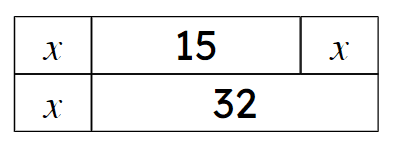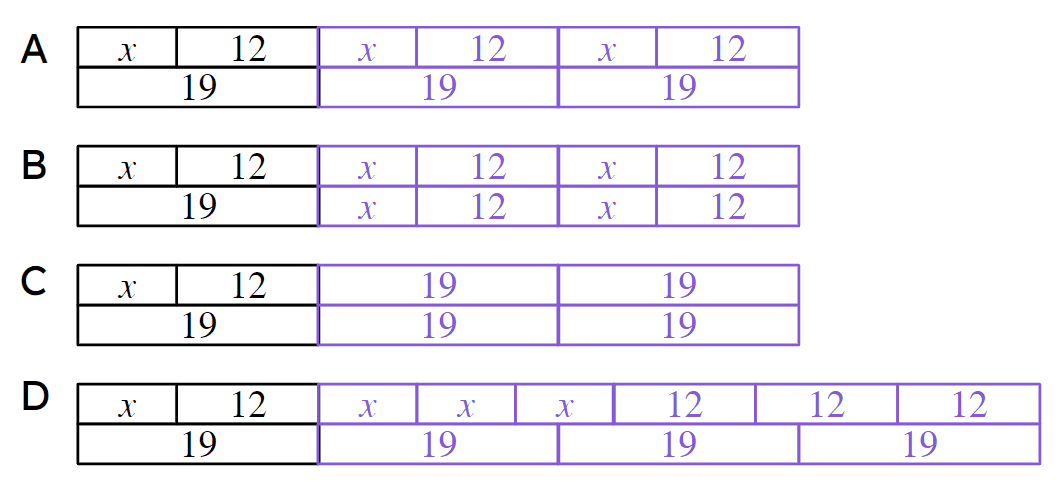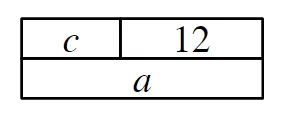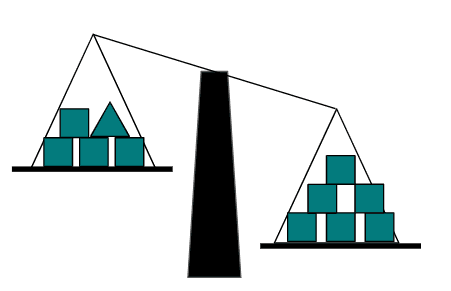Myths about teaching can hold you back


- Year 8
Equality in an equation
I can appreciate that in an equation the two sides of the equals sign balance.


- Year 8
Equality in an equation
I can appreciate that in an equation the two sides of the equals sign balance.
These resources were made for remote use during the pandemic, not classroom teaching.
Switch to our new teaching resources now - designed by teachers and leading subject experts, and tested in classrooms.
Lesson details
Key learning points
- The equals sign means that the two sides of the equation have the same value.
- This can be described as the expressions balancing.
- The equality of the expressions can be represented with a bar model.
- It is possible to rearrange equations to find the family of alternative versions of the equation.
Keywords
Equation - An equation is used to show two expressions that are equal to each other.
Common misconception
10 - x = 2 means that 2 - x = 10
Using bar models can help pupils understand rearranging additive relationships at an early stage.
To help you plan your year 8 maths lesson on: Equality in an equation, download all teaching resources for free and adapt to suit your pupils' needs...
To help you plan your year 8 maths lesson on: Equality in an equation, download all teaching resources for free and adapt to suit your pupils' needs.
The starter quiz will activate and check your pupils' prior knowledge, with versions available both with and without answers in PDF format.
We use learning cycles to break down learning into key concepts or ideas linked to the learning outcome. Each learning cycle features explanations with checks for understanding and practice tasks with feedback. All of this is found in our slide decks, ready for you to download and edit. The practice tasks are also available as printable worksheets and some lessons have additional materials with extra material you might need for teaching the lesson.
The assessment exit quiz will test your pupils' understanding of the key learning points.
Our video is a tool for planning, showing how other teachers might teach the lesson, offering helpful tips, modelled explanations and inspiration for your own delivery in the classroom. Plus, you can set it as homework or revision for pupils and keep their learning on track by sharing an online pupil version of this lesson.
Explore more key stage 3 maths lessons from the Solving linear equations unit, dive into the full secondary maths curriculum, or learn more about lesson planning.

Licence
Prior knowledge starter quiz
6 Questions
Q1.Which expression is represented by this bar model?

Q2.Select the bar model that correctly represents the equation $$3x + 15 = x + 32$$.




Q3.Given that $$2.4 + 3.7 = 6.1$$, which of these are also true?
Q4.This bar model represents the initial equation $$x + 16 = 27$$. What needs to be done to the top bar to maintain equality?

Q5.This bar model represents the initial equation $$2x + 5 = 9$$. What needs to be done to the top bar to maintain equality?

Q6.These 4 bar models represent operations performed on the equation $$x + 12 = 19$$. Match the bar models labelled A, B, C, D with the equivalent equation they represent .

A -
$$3(x + 12) = 57$$
B -
$$x + 12 + 2x + 24 = 19 + 2x + 24$$
C -
$$x + 12 + 38 = 19 + 38$$
D -
$$4(x + 12) = 76$$
Assessment exit quiz
6 Questions
Q1.Which equations are represented by this bar model?

Q2.Which equations are represented by this bar model?

Q3.If $$31 − x = 17$$, which of these equations are also true?
Q4.These scales are not balanced. The mass of all the square objects are the same. Which statements are definitely true?

Q5.The diagram shows a balanced scale on the left. When an operation is performed to the RHS, it is not balanced. What operation must be performed to the LHS to maintain equality?

Q6.The diagram shows a balanced scale on the left. When an operation is performed to the LHS, it is not balanced. What operation must be performed to the RHS to maintain equality?


